Sat Mag
‘Integrity, professionalism and empathy, the ethos of officering’

(The seventh death anniversary of Deshamanya Gen. Dennis Perera fell on 11 August. This is the Dennis Perera memorial oration 2016 delivered by Air Chief Marshal Gagan Bulathsinghala RWP, RSP, VSV, USP, Mphil, Msc, FIM(SL)ndc, psc, Former Commander of the Air Force and Ambassador to Afghanistan)
The former US President and Supreme Commander Allied Expeditionary Forces in WW 2, Gen. Dwight D. Eisenhower states:
“The supreme quality for leadership is unquestionable INTEGRITY.
Without it, no real success is possible;
No matter whether it is on a section, gang, a football field,
In an army or in an office!”
Reflecting on the illustrious career of the late Deshamanya Gen. Dennis Perera, one sees an outstanding leader whose lifetime principle was integrity of the highest order personifying exemplary moral courage to do what is needed and what is right, while being an officer and gentleman, par-excellence.
The young Master Dennis Perera was educated at St. Peter’s College, Colombo, and excelled as a multifaceted student both in academics and sport. In 1949, at the age of 19, he answered the call to the profession of arms to join the then young Ceylon Army.
Young Master Dennis Perera’s mother’s dream was for her son to a join the order and become a Priest, due to her strong faith in religion. However, an uncle of Master Perera, who was in the Ceylon Police, saw him more as soldier material and convinced his parents to let him join the Ceylon Army.
General Perera received his initial military training at Mons Officer Cadet School, UK, and the Royal Military Academy Sandhurst. He was also a graduate of the British Army’s Staff College, Camberley. In 1977, at the age of 46, he was bestowed the twin honours of being the first Engineer officer and also the youngest officer ever to be made the Commander of the Sri Lanka Army. Further the late Gen Perera was an alumni of the prestigious National Defence Collage of India.
On retirement, Gen. Perera continued to serve the nation and the corporate sector, first as the High Commissioner to Australia, and later as Chairman of the Securities Exchange Commission, and as Chairman of Ceylon Tobacco Company, and two other high performing Companies. In the year 2000, acknowledging his meritorious service to the nation he was bestowed the title, ‘Deshamanya’. He was next elevated to a Four Star General, in the year 2000.
Gen. Perera possessed a unique character and was known for his compassion and inspiration towards the people around him. He was well known to be a shrewd strategist and a sound leader who always lived up to the motto of the Royal Military Academy Sandhurst, ‘Serve to Lead’. Gen Perera maintained the highest level of integrity as an Officer and remains a role model for officering in the armed forces of Sri Lanka. As an officer, and a statesman, he made an everlasting impression for the military fraternity and the nation.
In 2010, I had an interesting experience when I flew with Gen. Perera and his gracious Lady to attend the golden Jubilee celebrations of the National Defence College, New Delhi. Though he had hung up his uniform, some time back, I felt the he remained a hard core General, the way he expressed his thoughts on military traditions. Every conversation, I had with Gen. Perera, made me feel proud as a military officer. It was very apparent that he was most upright and proud of the profession of arms. He professed that a military officer should never lean against any one or be a shadow to any one, and must stand up firm for what is right.
I am very confident that this august audience needs no elaboration on Gen. Perera‘s role in establishing the KDU. Gen. Perera pioneered and triggered the conversion of the ‘Kandawala Estate’ into the esteemed Military University it is today.
It was indeed fitting that Gen. Perera himself was appointed the first Chancellor after it became a University. Gen. Dennis Perera’s visionary leadership and foresight provided our Army with the Commandos and the Women’s Corps as integral units, in corporate parlance two timely investments that have brought rich dividends.
The Association of Retired Flag Rank Officers (ARFRO), which has brought us together this evening, was another successful effort of Gen Dennis Perera. This is the professional institution of the profession of arms in Sri Lanka. It is a member of the esteemed Organization of Professional Associations of Sri Lanka and is affiliation to the World Consultative Association of Retired Generals, Admirals & Air Marshals. A truly worthy outfit to be in, for military veteran of Flag rank after a retirement.
Ladies and gentlemen, Gen. Dennis Perera, was a passionate leader, a visionary and a professional, whose life is worthy of celebration at the highest level of esteem and appreciation.
Considering the epitome of military officering in Sri Lanka whom this oration is dedicated to, I chose as my discourse the obvious attributes practiced by him.
General Collin Powell, the former US Secretary of State said:
“The most important thing I learned is that soldiers watch what their leaders do. You can give them classes and lecture them forever, but it is your personal example they will follow.”
Ladies and gentlemen, from the very beginning of civilization, when mankind engaged in war fighting, the officer was the nucleus and the pivot around which the rank and file rallied for guidance, direction and leadership. Thus, an officer with firm, coherent decisional ability and robust leadership becomes important for the structural integrity of any military unit.
The contemporary armed forces are ramping up their efforts to groom a capable breed of officers to lead and confront the asymmetric threats encountered by nations in battle spaces which are not clearly defined. It is the need of the day that this effort should persist from the moment an officer joins, as it is only knowledge and its continuous application that will make one perfect.
In this context I would like to quote from Aristotle
“We are what we repeatedly do; Excellence, therefore, is not an act but a habit“.
For any military officer, Integrity is the primary attribute which strengthens his moral fiber to control emotions, both in times of adversity and success. Integrity is a leadership attribute discussed at length in our profession.
Integrity is defined as, ‘The quality of truthfulness, honesty and maintaining of moral standard’.
Integrity then should not be considered a mere attribute, but a virtue to live by for any officer.
The world today discusses and studiously studies “Ethics” in all spheres public, corporate, national and international. Similarly the military today has been rediscovered around an ethical compass, thus military leaders need to be aware of the dramatic lift in the bar of standards in accountability, honesty, and trust.
An officer is entrusted with; state secrets relating integrity of a nation and the lives of the public and the men he leads. If an officer is found to be dishonest or disloyal, it means that his character has two sides and one will manifest to suit the circumstance, to meet his personal liking and not the common goal.
The officers as leaders must demonstrate the moral fiber to be selfless to address the needs of their subordinates before their own, and possess the integrity to seek wholesome solutions.
Our great nation expects complete honesty and integrity from us; upon which it has entrusted its security and integrity and given us all which have said we needed to do the job. Anything less, if delivered will ultimately put our nation at risk by sabotaging its future, and its strategy to compete in the world. Therefore General Eisenhower’s’ edict that “Integrity is the supreme quality of leadership” is underscored with no doubt.
Even though midway, I need to make a disclaimer that I will generalize in relation to gender and refer to military personnel as HE or HIM, only to make life easier for me in this discourse and in no way lessen the immense contribution of the ladies in our profession. Professionalism is the next attribute of officering that I endeavor to relate to.
General Charles De Gaulle (Galle), the decorated French Soldier and President describes the men of our profession as:
“Men who adopt the profession of arms submit to their own free will to a law of perpetual constraint of their own accord.
If they drop in their tracks, if their ashes are scattered in the four winds that is all part and parcel of their job.”
The contemporary military culture is far distanced from the traditional forms of war fighting, as cyber space, smart equipment and proactive tactics have encroached at a rapid pace.
However, technology cannot and will not replace the concept of professional officering. Thus the military needs a corps of highly skilled technology savvy officers to command them in tomorrow’s uncertain environment.
On the other hand, the knowledge of common affairs and skill that is expected from an officer cannot be obtained only by referring to a stack of books and manuals only. It is cumulative, and gained through hard experiences learnt through failures and the continuous attempts to succeed.
The men, the officer of today is called upon to command, are technology savvy, well educated, well socialized and have grown up in a free thinking environment. To be able command their respect and followership one needs to prove professional ability beyond doubt.
The opponents of peace the officer of today will be called upon to confront, are shrewd exponents of asymmetric warfare and are capable of exceptional cruelty and violence as well as, well strategized operations. They have learned and trained to exploit technology and the human mind, with much precision and process to achieve their sick ideological objectives.
Their standard modus operandi is to attack the social fabric at the same time from many directions.
In this context it is imperative for the officer who leads from the front to develop knowledge and all round capacity that includes ‘outside ones lane’ knowledge.
Ladies and gentlemen, at the end of the day, the most important and cardinal characteristic a professional needs to have is the knowledge and competence in one’s own field.
The legendary Field Marshal Sam Manekshaw, of the Indian army has once said:
“….. you cannot be born with professional knowledge and professional competence even if you are a child of Prime Minister, or the son of an industrialist or the progeny of a Field Marshal. Professional knowledge and professional competence have to be acquired by hard work and constant study.”
In addition to the explicit and tacit knowledge an officer is armed with, he also needs to have an inner thirst and passion for knowledge for things unknown and things outside the zone of comfort. For this the officer needs to be enthusiastic in the never ending process of developing new skills and acquiring new knowledge.
Due to the uncertainty, the high stress levels, and the continuously evolving threats to the society he serves, an officer’s professional competence must be at the highest level at all times.
For this it is necessary, that the appropriate candidates only be selected to hold the commission, and the aspects of their selection, training, assigning and evaluation, given the highest precedence of priority by the authorities concerned. Incompetent and unprofessional officers, who are unsuitable to lead men and incapable of rational decision-making, should not be tolerated in any military institution.
The popular edict goes on to say that “there are no bad soldiers but only bad officers”
Professionalism for an officer is not only knowing the job, but it also relates to the discipline and decorum that he and his men maintain while engaged on the task, whatever the circumstances may be. This goes beyond an officer inspecting haircuts, and turn out and bearing but reaches out to greater depth of intervening into unprofessional conduct, such as human rights abuses, or even fraternization. Both these occur due to the lack of self-control and the moral fiber to control ones emotions and is a failure that should be purged from the professional officer corps at the first hint of existence.
In this context, it is the conduct of the officer that the men will follow, and this will then decide, the esteem of the unit in the social domain it operates.
As per the Sri Lanka Air Force Ethos, Core Values and Standards adopted from the Royal Air Force, it applies the following test to determine the code of social conduct.
‘Have the actions or behaviour of an individual adversely impacted, or are they likely to impact, on the efficiency or operational effectiveness of the Sri Lanka Air Force?’
This test applies to all individuals of the SLAF, on or off duty, in order to undermine unprofessional behaviour without hesitation. As far as the social fabric surrounding the Sri Lankan military is concerned.
I strongly believe that this ‘self-query’ can be applied to any service institution. In the Sri Lankan post conflict environment, where we experience numerous cynical and false expressions, relating to our past and present conduct, it is the leadership that must emerge with professionalism. For this the cornerstone of professionalism must be invented upon good order, discipline, decorum, and exemplary conduct. If our profession loses the trust and confidence of the societal domain, due to unprofessional conduct, it becomes increasingly difficult to acquire the much needed popular support for the conduct of our core competency. Therefore, we must bear in mind that we as officers are responsible for the public’s perception of our institutions.
From professionalism I now delve into Empathy, the softer and lesser discussed attribute in an officer’s repertoire.
General Omar Bradley better known as the soldiers general during WW2 in one of his papers on Leadership states;
“A leader should possess human understanding and consideration for others. Men are not robots and should not be treated as though they were machines. I do not by any means suggest coddling. But men are highly intelligent, complicated beings who will respond favourably to human understanding and consideration. By this means, their leader will get maximum effort from each of them.”
Knowing your men and to possess the ability to understand and share their feelings are essential empathetic traits of a leader. It is important to develop a memory for names and faces of the people under ones command. The saying goes, ‘a man’s name is to him the most important word in his language’. Our subordinates endure great pains emotionally, psychologically, physically and socially during war and during peace.
For an officer to mitigate the emotional pain, the officer needs to be able to empathize and make the man feel that his pain is felt even though not necessarily shared or the issue resolved. The approach to resolving subordinates emotional issues is often confounding as only the manifestation is seen.
Human and social issues faced by our subordinates cannot be resolved by the mere application of military law or generous distribution of welfare items to families of subordinates. The genuine caring nature and the ability to feel subordinates pain and see their point of view even though not necessarily accepted are the qualities of an empathetic leader.
Thus, empathy, is an integral part of officering as our subordinates, are constantly exposed to multifarious and intense stressors.
If we carefully review history we see the empathetic side of leaders who were ruthless in the execution of war.
Field Marshall Erwin Rommell the legendry ‘Dessert Fox’ of the Africa Korps, is known to have been greatly loved by his men and respected by the enemy; he is said to have looked after his men well and grieved at their loss, It is also said that he ignored orders from Nazi leadership to summarily execute prisoners of war.
When an officer is aware of the emotional state of his men, it creates an unspoken bond of trust between them and the officer. Without empathy and compassion ones subordinates will always keep their ‘guards up’ and be cautious and will have less camaraderie towards their leader.
General George S. Patton, better known by men as “ole blood an guts” is quoted in the book “War as I knew it”
“Officers are responsible, not only for the conduct of their men in battle, but also for their health and contentment when not fighting. An officer must be the last man to take shelter from fire, and the first to move forward.
Throughout my discourse I have elaborated on three core attributes that are the Ethos of Officering, Integrity, Professionalism, and Empathy. The thresholds of these three attributes converge in most instances supporting one and other.
These three attributes taken in broader sense encompass all values that we would like a leader of our choice to possess. It is not rationally possible for a single human being to possess all three values in their entirety, but we as seniors need to emphasize the importance of these attributes to our younger generations.
As I said, our younger generations have grown up in a “free thinking environment” and tend to refer to the words realism and pragmatism instead of values. It is in this sense that we need to create awareness of the importance of “means as well as the successful achievement of the end” It is here that the Ethos of officering comes into bearing.
In the SLAF we have recently introduced the booklet “ETHOS & CORE VALUES” in this we have translated our values into a broad statement.Through this statement our intention is to give the officer an identity based on value and say ‘this is who I am’. At this point I must acknowledge that this book is based on an inheritance from The Royal Air Force but has been remodeled to suit our needs, our culture, and our own values.
The art of officering has evolved in many ways to suit the trends of change, but there are many unwritten laws, traditions, customs, and a value based system of officering handed down by our forefathers of this profession that our generation will now hand over to the next. Men and technology will come and retire but these value based traditions cannot be changed nor should review be attempted, as they stem from valuable lessons learnt from engagement in painful conflict.
Integrity, professionalism and empathy are the attributes that serve as the pillars of genuine officering, they need to be taught, nurtured, developed and appreciated when practiced. This will ensure that the respect and esteem of our sacred profession will remain intact.
May the Late Deshamanya Gen. Dennis Perera be remembered by the future generation for his excellence in soldiering!
Sat Mag
October 13 at the Women’s T20 World Cup: Injury concerns for Australia ahead of blockbuster game vs India
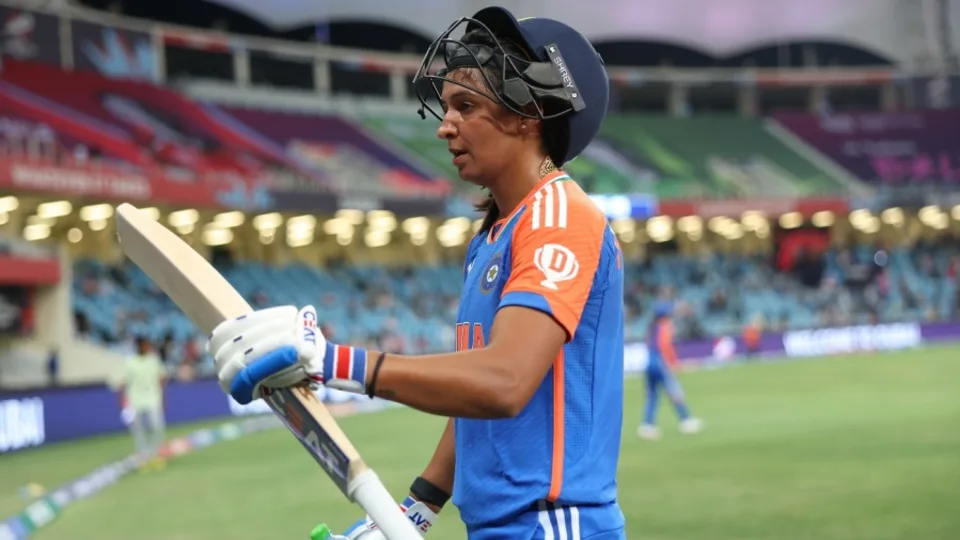
Australia vs India
Sharjah, 6pm local time
Australia have major injury concerns heading into the crucial clash. Just four balls into the match against Pakistan, Tayla Vlaeminck was out with a right shoulder dislocation. To make things worse, captain Alyssa Healy suffered an acute right foot injury while batting on 37 as she hobbled off the field with Australia needing 14 runs to win. Both players went for scans on Saturday.
India captain Harmanpreet Kaur who had hurt her neck in the match against Pakistan, turned up with a pain-relief patch on the right side of her neck during the Sri Lanka match. She also didn’t take the field during the chase. Fast bowler Pooja Vastrakar bowled full-tilt before the Sri Lanka game but didn’t play.
India will want a big win against Australia. If they win by more than 61 runs, they will move ahead of Australia, thereby automatically qualifying for the semi-final. In a case where India win by fewer than 60 runs, they will hope New Zealand win by a very small margin against Pakistan on Monday. For instance, if India make 150 against Australia and win by exactly 10 runs, New Zealand need to beat Pakistan by 28 runs defending 150 to go ahead of India’s NRR. If India lose to Australia by more than 17 runs while chasing a target of 151, then New Zealand’s NRR will be ahead of India, even if Pakistan beat New Zealand by just 1 run while defending 150.
Overall, India have won just eight out of 34 T20Is they’ve played against Australia. Two of those wins came in the group-stage games of previous T20 World Cups, in 2018 and 2020.
Australia squad:
Alyssa Healy (capt & wk), Darcie Brown, Ashleigh Gardner, Kim Garth, Grace Harris, Alana King, Phoebe Litchfield, Tahlia McGrath, Sophie Molineux, Beth Mooney, Ellyse Perry, Megan Schutt, Annabel Sutherland, Tayla Vlaeminck, Georgia Wareham
India squad:
Harmanpreet Kaur (capt), Smriti Mandhana (vice-capt), Yastika Bhatia (wk), Shafali Verma, Deepti Sharma, Jemimah Rodrigues, Richa Ghosh (wk), Pooja Vastrakar, Arundhati Reddy, Renuka Singh, D Hemalatha, Asha Sobhana, Radha Yadav, Shreyanka Patil, S Sajana
Tournament form guide:
Australia have three wins in three matches and are coming into this contest having comprehensively beaten Pakistan. With that win, they also all but sealed a semi-final spot thanks to their net run rate of 2.786. India have two wins in three games. In their previous match, they posted the highest total of the tournament so far – 172 for 3 and in return bundled Sri Lanka out for 90 to post their biggest win by runs at the T20 World Cup.
Players to watch:
Two of their best batters finding their form bodes well for India heading into the big game. Harmanpreet and Mandhana’s collaborative effort against Pakistan boosted India’s NRR with the semi-final race heating up. Mandhana, after a cautious start to her innings, changed gears and took on Sri Lanka’s spinners to make 50 off 38 balls. Harmanpreet, continuing from where she’d left against Pakistan, played a classic, hitting eight fours and a six on her way to a 27-ball 52. It was just what India needed to reinvigorate their T20 World Cup campaign.
[Cricinfo]
Sat Mag
Living building challenge

By Eng. Thushara Dissanayake
The primitive man lived in caves to get shelter from the weather. With the progression of human civilization, people wanted more sophisticated buildings to fulfill many other needs and were able to accomplish them with the help of advanced technologies. Security, privacy, storage, and living with comfort are the common requirements people expect today from residential buildings. In addition, different types of buildings are designed and constructed as public, commercial, industrial, and even cultural or religious with many advanced features and facilities to suit different requirements.
We are facing many environmental challenges today. The most severe of those is global warming which results in many negative impacts, like floods, droughts, strong winds, heatwaves, and sea level rise due to the melting of glaciers. We are experiencing many of those in addition to some local issues like environmental pollution. According to estimates buildings account for nearly 40% of all greenhouse gas emissions. In light of these issues, we have two options; we change or wait till the change comes to us. Waiting till the change come to us means that we do not care about our environment and as a result we would have to face disastrous consequences. Then how can we change in terms of building construction?
Before the green concept and green building practices come into play majority of buildings in Sri Lanka were designed and constructed just focusing on their intended functional requirements. Hence, it was much likely that the whole process of design, construction, and operation could have gone against nature unless done following specific regulations that would minimize negative environmental effects.
We can no longer proceed with the way we design our buildings which consumes a huge amount of material and non-renewable energy. We are very concerned about the food we eat and the things we consume. But we are not worrying about what is a building made of. If buildings are to become a part of our environment we have to design, build and operate them based on the same principles that govern the natural world. Eventually, it is not about the existence of the buildings, it is about us. In other words, our buildings should be a part of our natural environment.
The living building challenge is a remarkable design philosophy developed by American architect Jason F. McLennan the founder of the International Living Future Institute (ILFI). The International Living Future Institute is an environmental NGO committed to catalyzing the transformation toward communities that are socially just, culturally rich, and ecologically restorative. Accordingly, a living building must meet seven strict requirements, rather certifications, which are called the seven “petals” of the living building. They are Place, Water, Energy, Equity, Materials, Beauty, and Health & Happiness. Presently there are about 390 projects around the world that are being implemented according to Living Building certification guidelines. Let us see what these seven petals are.
Place
This is mainly about using the location wisely. Ample space is allocated to grow food. The location is easily accessible for pedestrians and those who use bicycles. The building maintains a healthy relationship with nature. The objective is to move away from commercial developments to eco-friendly developments where people can interact with nature.
Water
It is recommended to use potable water wisely, and manage stormwater and drainage. Hence, all the water needs are captured from precipitation or within the same system, where grey and black waters are purified on-site and reused.
Energy
Living buildings are energy efficient and produce renewable energy. They operate in a pollution-free manner without carbon emissions. They rely only on solar energy or any other renewable energy and hence there will be no energy bills.
Equity
What if a building can adhere to social values like equity and inclusiveness benefiting a wider community? Yes indeed, living buildings serve that end as well. The property blocks neither fresh air nor sunlight to other adjacent properties. In addition, the building does not block any natural water path and emits nothing harmful to its neighbors. On the human scale, the equity petal recognizes that developments should foster an equitable community regardless of an individual’s background, age, class, race, gender, or sexual orientation.
Materials
Materials are used without harming their sustainability. They are non-toxic and waste is minimized during the construction process. The hazardous materials traditionally used in building components like asbestos, PVC, cadmium, lead, mercury, and many others are avoided. In general, the living buildings will not consist of materials that could negatively impact human or ecological health.
Beauty
Our physical environments are not that friendly to us and sometimes seem to be inhumane. In contrast, a living building is biophilic (inspired by nature) with aesthetical designs that beautify the surrounding neighborhood. The beauty of nature is used to motivate people to protect and care for our environment by connecting people and nature.
Health & Happiness
The building has a good indoor and outdoor connection. It promotes the occupants’ physical and psychological health while causing no harm to the health issues of its neighbors. It consists of inviting stairways and is equipped with operable windows that provide ample natural daylight and ventilation. Indoor air quality is maintained at a satisfactory level and kitchen, bathrooms, and janitorial areas are provided with exhaust systems. Further, mechanisms placed in entrances prevent any materials carried inside from shoes.
The Bullitt Center building
Bullitt Center located in the middle of Seattle in the USA, is renowned as the world’s greenest commercial building and the first office building to earn Living Building certification. It is a six-story building with an area of 50,000 square feet. The area existed as a forest before the city was built. Hence, the Bullitt Center building has been designed to mimic the functions of a forest.
The energy needs of the building are purely powered by the solar system on the rooftop. Even though Seattle is relatively a cloudy city the Bullitt Center has been able to produce more energy than it needed becoming one of the “net positive” solar energy buildings in the world. The important point is that if a building is energy efficient only the area of the roof is sufficient to generate solar power to meet its energy requirement.
It is equipped with an automated window system that is able to control the inside temperature according to external weather conditions. In addition, a geothermal heat exchange system is available as the source of heating and cooling for the building. Heat pumps convey heat stored in the ground to warm the building in the winter. Similarly, heat from the building is conveyed into the ground during the summer.
The potable water needs of the building are achieved by treating rainwater. The grey water produced from the building is treated and re-used to feed rooftop gardens on the third floor. The black water doesn’t need a sewer connection as it is treated to a desirable level and sent to a nearby wetland while human biosolid is diverted to a composting system. Further, nearly two third of the rainwater collected from the roof is fed into the groundwater and the process resembles the hydrologic function of a forest.
It is encouraging to see that most of our large-scale buildings are designed and constructed incorporating green building concepts, which are mainly based on environmental sustainability. The living building challenge can be considered an extension of the green building concept. Amanda Sturgeon, the former CEO of the ILFI, has this to say in this regard. “Before we start a project trying to cram in every sustainable solution, why not take a step outside and just ask the question; what would nature do”?
Sat Mag
Something of a revolution: The LSSP’s “Great Betrayal” in retrospect
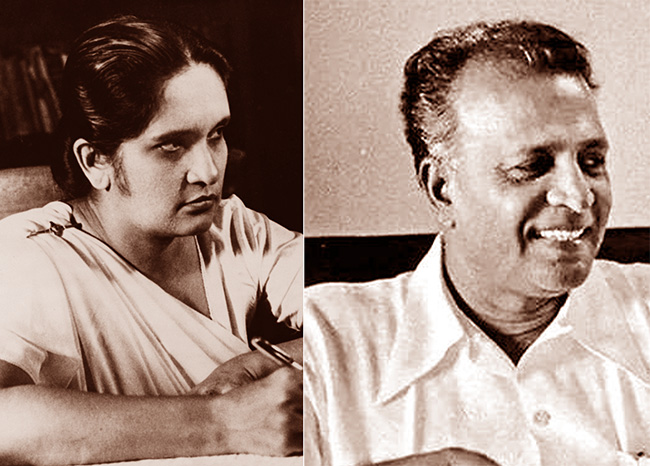
By Uditha Devapriya
On June 7, 1964, the Central Committee of the Lanka Sama Samaja Party convened a special conference at which three resolutions were presented. The first, moved by N. M. Perera, called for a coalition with the SLFP, inclusive of any ministerial portfolios. The second, led by the likes of Colvin R. de Silva, Leslie Goonewardena, and Bernard Soysa, advocated a line of critical support for the SLFP, but without entering into a coalition. The third, supported by the likes of Edmund Samarakkody and Bala Tampoe, rejected any form of compromise with the SLFP and argued that the LSSP should remain an independent party.
The conference was held a year after three parties – the LSSP, the Communist Party, and Philip Gunawardena’s Mahajana Eksath Peramuna – had founded a United Left Front. The ULF’s formation came in the wake of a spate of strikes against the Sirimavo Bandaranaike government. The previous year, the Ceylon Transport Board had waged a 17-day strike, and the harbour unions a 60-day strike. In 1963 a group of working-class organisations, calling itself the Joint Committee of Trade Unions, began mobilising itself. It soon came up with a common programme, and presented a list of 21 radical demands.
In response to these demands, Bandaranaike eventually supported a coalition arrangement with the left. In this she was opposed, not merely by the right-wing of her party, led by C. P. de Silva, but also those in left parties opposed to such an agreement, including Bala Tampoe and Edmund Samarakkody. Until then these parties had never seen the SLFP as a force to reckon with: Leslie Goonewardena, for instance, had characterised it as “a Centre Party with a programme of moderate reforms”, while Colvin R. de Silva had described it as “capitalist”, no different to the UNP and by default as bourgeois as the latter.
The LSSP’s decision to partner with the government had a great deal to do with its changing opinions about the SLFP. This, in turn, was influenced by developments abroad. In 1944, the Fourth International, which the LSSP had affiliated itself with in 1940 following its split with the Stalinist faction, appointed Michel Pablo as its International Secretary. After the end of the war, Pablo oversaw a shift in the Fourth International’s attitude to the Soviet states in Eastern Europe. More controversially, he began advocating a strategy of cooperation with mass organisations, regardless of their working-class or radical credentials.
Pablo argued that from an objective perspective, tensions between the US and the Soviet Union would lead to a “global civil war”, in which the Soviet Union would serve as a midwife for world socialist revolution. In such a situation the Fourth International would have to take sides. Here he advocated a strategy of entryism vis-à-vis Stalinist parties: since the conflict was between Stalinist and capitalist regimes, he reasoned, it made sense to see the former as allies. Such a strategy would, in his opinion, lead to “integration” into a mass movement, enabling the latter to rise to the level of a revolutionary movement.

Though controversial, Pablo’s line is best seen in the context of his times. The resurgence of capitalism after the war, and the boom in commodity prices, had a profound impact on the course of socialist politics in the Third World. The stunted nature of the bourgeoisie in these societies had forced left parties to look for alternatives. For a while, Trotsky had been their guide: in colonial and semi-colonial societies, he had noted, only the working class could be expected to see through a revolution. This entailed the establishment of workers’ states, but only those arising from a proletarian revolution: a proposition which, logically, excluded any compromise with non-radical “alternatives” to the bourgeoisie.
To be sure, the Pabloites did not waver in their support for workers’ states. However, they questioned whether such states could arise only from a proletarian revolution. For obvious reasons, their reasoning had great relevance for Trotskyite parties in the Third World. The LSSP’s response to them showed this well: while rejecting any alliance with Stalinist parties, the LSSP sympathised with the Pabloites’ advocacy of entryism, which involved a strategic orientation towards “reformist politics.” For the world’s oldest Trotskyite party, then going through a series of convulsions, ruptures, and splits, the prospect of entering the reformist path without abandoning its radical roots proved to be welcoming.
Writing in the left-wing journal Community in 1962, Hector Abhayavardhana noted some of the key concerns that the party had tried to resolve upon its formation. Abhayavardhana traced the LSSP’s origins to three developments: international communism, the freedom struggle in India, and local imperatives. The latter had dictated the LSSP’s manifesto in 1936, which included such demands as free school books and the use of Sinhala and Tamil in the law courts. Abhayavardhana suggested, correctly, that once these imperatives changed, so would the party’s focus, though within a revolutionary framework. These changes would be contingent on two important factors: the establishment of universal franchise in 1931, and the transfer of power to the local bourgeoisie in 1948.
Paradoxical as it may seem, the LSSP had entered the arena of radical politics through the ballot box. While leading the struggle outside parliament, it waged a struggle inside it also. This dual strategy collapsed when the colonial government proscribed the party and the D. S. Senanayake government disenfranchised plantation Tamils. Suffering two defeats in a row, the LSSP was forced to think of alternatives. That meant rethinking categories such as class, and grounding them in the concrete realities of the country.
This was more or less informed by the irrelevance of classical and orthodox Marxian analysis to the situation in Sri Lanka, specifically to its rural society: with a “vast amorphous mass of village inhabitants”, Abhayavardhana observed, there was no real basis in the country for a struggle “between rich owners and the rural poor.” To complicate matters further, reforms like the franchise and free education, which had aimed at the emancipation of the poor, had in fact driven them away from “revolutionary inclinations.” The result was the flowering of a powerful rural middle-class, which the LSSP, to its discomfort, found it could not mobilise as much as it had the urban workers and plantation Tamils.
Where else could the left turn to? The obvious answer was the rural peasantry. But the rural peasantry was in itself incapable of revolution, as Hector Abhayavardhana has noted only too clearly. While opposing the UNP’s Westernised veneer, it did not necessarily oppose the UNP’s overtures to Sinhalese nationalism. As historians like K. M. de Silva have observed, the leaders of the UNP did not see their Westernised ethos as an impediment to obtaining support from the rural masses. That, in part at least, was what motivated the Senanayake government to deprive Indian estate workers of their most fundamental rights, despite the existence of pro-minority legal safeguards in the Soulbury Constitution.
To say this is not to overlook the unique character of the Sri Lankan rural peasantry and petty bourgeoisie. Orthodox Marxists, not unjustifiably, characterise the latter as socially and politically conservative, tilting more often than not to the right. In Sri Lanka, this has frequently been the case: they voted for the UNP in 1948 and 1952, and voted en masse against the SLFP in 1977. Yet during these years they also tilted to the left, if not the centre-left: it was the petty bourgeoisie, after all, which rallied around the SLFP, and supported its more important reforms, such as the nationalisation of transport services.
One must, of course, be wary of pasting the radical tag on these measures and the classes that ostensibly stood for them. But if the Trotskyite critique of the bourgeoisie – that they were incapable of reform, even less revolution – holds valid, which it does, then the left in the former colonies of the Third World had no alternative but to look elsewhere and to be, as Abhayavardhana noted, “practical men” with regard to electoral politics. The limits within which they had to work in Sri Lanka meant that, in the face of changing dynamics, especially among the country’s middle-classes, they had to change their tactics too.
Meanwhile, in 1953, the Trotskyite critique of Pabloism culminated with the publication of an Open Letter by James Cannon, of the US Socialist Workers’ Party. Cannon criticised the Pabloite line, arguing that it advocated a policy of “complete submission.” The publication of the letter led to the withdrawal of the International Committee of the Fourth International from the International Secretariat. The latter, led by Pablo, continued to influence socialist parties in the Third World, advocating temporary alliances with petty bourgeois and centrist formations in the guise of opposing capitalist governments.
For the LSSP, this was a much-needed opening. Even as late as 1954, three years after S. W. R. D. Bandaranaike formed the SLFP, the LSSP continued to characterise the latter as the alternative bourgeois party in Ceylon. Yet this did not deter it from striking up no contest pacts with Bandaranaike at the 1956 election, a strategy that went back to November 1951, when the party requested the SLFP to hold a discussion about the possibility of eliminating contests in the following year’s elections. Though it extended critical support to the MEP government in 1956, the LSSP opposed the latter once it enacted emergency measures in 1957, mobilising trade union action for a period of three years.
At the 1960 election the LSSP contested separately, with the slogan “N. M. for P.M.” Though Sinhala nationalism no longer held sway as it had in 1956, the LSSP found itself reduced to a paltry 10 seats. It was against this backdrop that it began rethinking its strategy vis-à-vis the ruling party. At the throne speech in April 1960, Perera openly declared that his party would not stabilise the SLFP. But a month later, in May, he called a special conference, where he moved a resolution for a coalition with the party. As T. Perera has noted in his biography of Edmund Samarakkody, the response to the resolution unearthed two tendencies within the oppositionist camp: the “hardliners” who opposed any compromise with the SLFP, including Samarakkody, and the “waverers”, including Leslie Goonewardena.
These tendencies expressed themselves more clearly at the 1964 conference. While the first resolution by Perera called for a complete coalition, inclusive of Ministries, and the second rejected a coalition while extending critical support, the third rejected both tactics. The outcome of the conference showed which way these tendencies had blown since they first manifested four years earlier: Perera’s resolution obtained more than 500 votes, the second 75 votes, the third 25. What the anti-coalitionists saw as the “Great Betrayal” of the LSSP began here: in a volte-face from its earlier position, the LSSP now held the SLFP as a party of a radical petty bourgeoisie, capable of reform.
History has not been kind to the LSSP’s decision. From 1970 to 1977, a period of less than a decade, these strategies enabled it, as well as the Communist Party, to obtain a number of Ministries, as partners of a petty bourgeois establishment. This arrangement collapsed the moment the SLFP turned to the right and expelled the left from its ranks in 1975, in a move which culminated with the SLFP’s own dissolution two years later.
As the likes of Samarakkody and Meryl Fernando have noted, the SLFP needed the LSSP and Communist Party, rather than the other way around. In the face of mass protests and strikes in 1962, the SLFP had been on the verge of complete collapse. The anti-coalitionists in the LSSP, having established themselves as the LSSP-R, contended later on that the LSSP could have made use of this opportunity to topple the government.
Whether or not the LSSP could have done this, one can’t really tell. However, regardless of what the LSSP chose to do, it must be pointed out that these decades saw the formation of several regimes in the Third World which posed as alternatives to Stalinism and capitalism. Moreover, the LSSP’s decision enabled it to see through certain important reforms. These included Workers’ Councils. Critics of these measures can point out, as they have, that they could have been implemented by any other regime. But they weren’t. And therein lies the rub: for all its failings, and for a brief period at least, the LSSP-CP-SLFP coalition which won elections in 1970 saw through something of a revolution in the country.
The writer is an international relations analyst, researcher, and columnist based in Sri Lanka who can be reached at udakdev1@gmail.com
-

 News5 days ago
News5 days agoCommercial High Court orders AASSL to pay Rs 176 mn for unilateral termination of contract
-
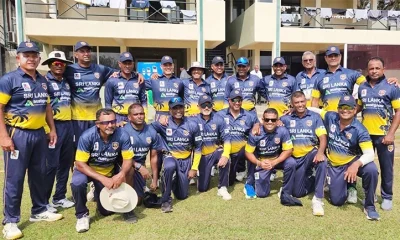
 Sports4 days ago
Sports4 days agoSri Lanka face Australia in Masters World Cup semi-final today
-
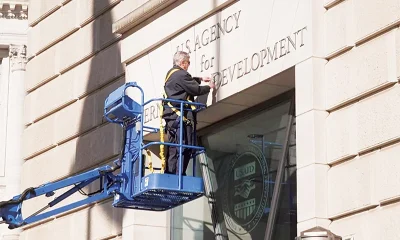
 Features6 days ago
Features6 days agoUSAID and NGOS under siege
-
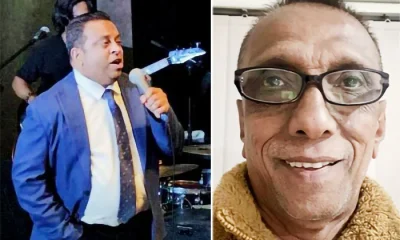
 Features6 days ago
Features6 days agoDoing it in the Philippines…
-

 Midweek Review5 days ago
Midweek Review5 days agoImpact of US policy shift on Sri Lanka
-
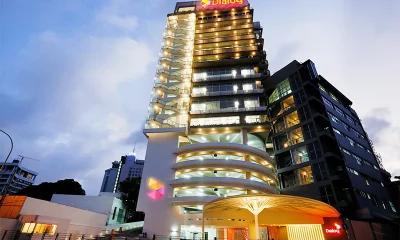
 Business6 days ago
Business6 days agoDialog delivers strong FY 2024 performance with 10% Core Revenue Growth
-

 News4 days ago
News4 days agoCourtroom shooting: Police admit serious security lapses
-
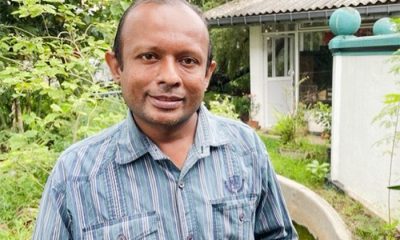
 News5 days ago
News5 days agoFSP lambasts Budget as extension of IMF austerity agenda at the expense of people











